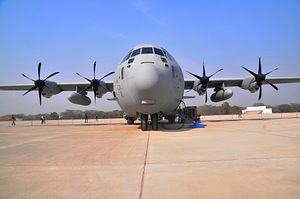On January 9, the United States disclosed that it would give the Philippines a pair of surplus Lockheed Martin C-130T Hercules transport aircraft in early 2016.
This is old news to those who follow Asian defense closely. The Philippines has been looking to boost its C-130 fleet for years, and the Obama administration has been mulling granting such aircraft to the Philippine government for a while now, with outstanding questions on issues such as the number and timing. News of the impending donation itself first broke publicly in July 2014, with the chief of the Armed Forces of the Philippines (AFP) Gen. Gregorio Pio Catapang Jr. disclosing that the planes would be delivered in 2015 and all that was left was the finalization of documents. The official announcement now confirms that it will happen in 2016, not 2015.
There is little doubt that this is a much-needed boost for the Philippine military. The C-130s play a critical role in “strategic airlifting,” which is in high demand — especially when the country is ravaged by natural disasters and needs to transport victims, rescue personnel, and supplies, as was the case with Typhoon Hagupit in 2014. But C-130s also have broader applications, including moving and resupplying troops to tackle ongoing insurgencies at home and assisting in humanitarian disaster relief and peacekeeping operations abroad. The Philippine military used to have many more C-130s lying around a few decades ago, but they were mothballed following years of neglect that many now bemoan. As a result, the country’s capacity has long been vastly overstretched and it badly needs more of these planes.
The deal is also cost-effective, which is hardly an unimportant consideration for the two allies who just inked a new defense agreement last year with a wary eye towards China’s continued assertiveness in the South China Sea. The cash-strapped Philippines often cannot afford new equipment, and this pact offers it refurbished items that Washington is also helping pay for. Meanwhile, the United States gets to boost its ally’s capabilities with equipment it no longer needs amid lingering worries about sequestration.
While this is a boost for the Philippine military, it is also a small one. Former AFP chief Gen. Emmanuel Bautista has said publicly that the Philippine Air Force should have at least nine C-130s, so this addition alone still leaves much to be desired. Other creative moves could get it to that magic number, though. For instance, while most of the old Philippine C-130s referenced earlier are beyond repair, insiders say at least a few of them can still be brought back after significant work and some time. That would be a welcome step as the country looks to finally truly modernize its military over the next few years.

































